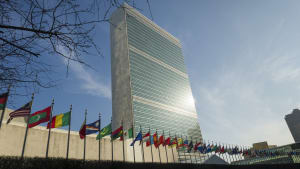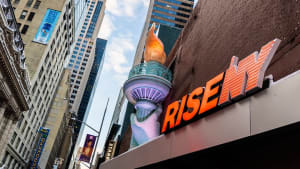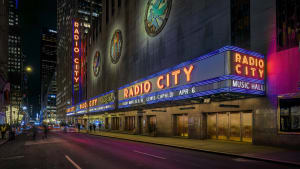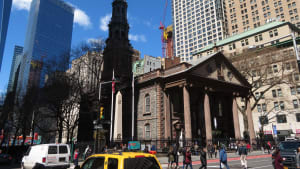The Ultimate Guide to Navigating NYC with a MetroCard
While the MetroCard is on the path to being replaced by the advanced OMNY system, it still holds significant value for certain travelers in New York City, offering flexibility and cost-effective options. Explore the nuances of this iconic travel card, and learn how to select the most suitable option for navigating the bustling streets of the Big Apple with confidence and ease.
The MetroCard in a nutshell…
The MetroCard serves as a ticketing solution for New York City’s public transportation, allowing users to pay fares on subways, buses, express buses, and even on certain regional transit systems.
For most users, the 7-Day Unlimited Ride MetroCard, priced at $34, presents the best value, allowing unlimited rides on subways and buses for seven days, ideal for both residents and tourists alike.
Alternatively, the Pay-Per-Ride option, costing $2.90 per ride, is suitable for occasional travelers, with the flexibility to share among up to four people. These cards, along with other types like the Single Ride Ticket and JFK AirTrain 10-Trip MetroCard, can be purchased at MetroCard vending machines located in subway stations, ensuring easy access for all users.
In addition to the physical MetroCard, the contactless OMNY system presents a more modern and recommended alternative for visitors due to its simplicity and ease of use. With OMNY, you can conveniently tap and go using a contactless credit or debit card, or a smartphone. This system offers the same base fare of $2.90, along with the added advantages of free transfers and fare capping benefits, making it an ideal choice for travelers seeking a straightforward and efficient way to navigate New York City.
Whether opting for a traditional MetroCard or the digital ease of OMNY, navigating NYC’s transit system becomes a seamless part of the city experience, connecting you effortlessly to the vibrant life of the Big Apple.
New York City, famed for its ceaseless energy and sprawling urban landscape, finds its rhythm through an efficient and extensive public transportation system. Central to this system is the MetroCard, a magnetic stripe card introduced in 1994, replacing the old token system.
However, it’s important to note that the MetroCard will eventually be phased out, making way for the OMNY system, a very convenient and modern alternative that visitors might want to consider. This upcoming transition signifies another significant leap in urban mobility, transforming how New Yorkers and visitors alike navigate the city’s subway, rail, and bus routes.
This shift marked a significant leap in urban mobility, transforming the way New Yorkers and visitors navigate the city’s subway and bus routes. The MetroCard’s introduction was more than a technological upgrade; it represented a new chapter in accessible and streamlined urban transit.
The significance of the MetroCard extends beyond its functional role. It’s a symbol of New York’s commitment to public transit, serving as an essential tool for millions to access diverse neighborhoods and cultural hubs. The card simplifies travel across the five boroughs, uniting them into an interconnected network. This ease of movement supports the city’s dynamic lifestyle, making the vast urban expanse more navigable and inclusive.
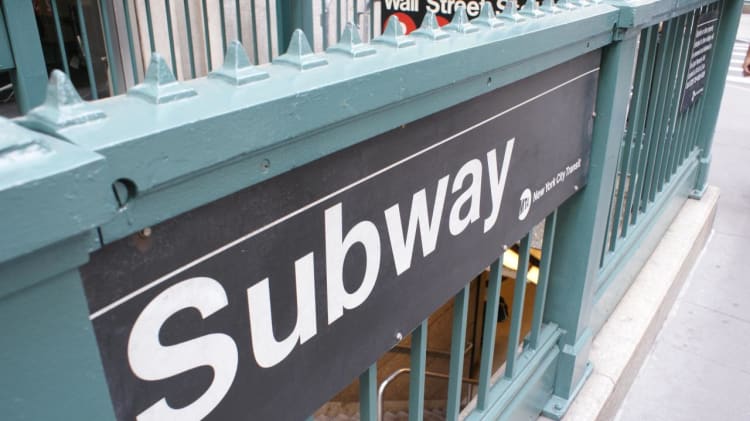
Beyond its practical use, the MetroCard has woven itself into the cultural tapestry of New York City. It’s a tangible piece of the city’s identity, often seen in media and cherished by visitors as a memento. The MetroCard, in essence, embodies the spirit of New York - constantly moving, evolving, and connecting people from all walks of life. As we explore the facets of the MetroCard, we uncover not just a transit pass but a key to understanding the city’s pulse and commitment to progress.
Where can the MetroCard be used?
The MetroCard, a staple of New York City’s transportation system, offers broad utility across multiple transit services. Its versatility makes it an indispensable tool for navigating not just within the city, but also to and from various surrounding areas. Here’s where you can use your MetroCard:
- Subways: Access all subway lines throughout New York City, making it easy to explore from uptown to downtown and everywhere in between.
- City Buses: Valid on all NYC buses providing convenient travel within the city and to its outskirts.
- Express Buses: Use it for a faster, more direct bus service, ideal for longer distances or commuting.
Additionally, the MetroCard is accepted by several regional transit partners:
- PATH Trains: For travel between New York City and New Jersey, the MetroCard can be used on PATH trains.
- AirTrain JFK: Connects you to JFK International Airport, essential for travelers flying in or out of New York City.
- NICE Bus (Nassau Inter-County Express): Covers routes in Nassau County, extending the reach of your MetroCard beyond the city.
- Westchester Bee-Line Buses: For travel within Westchester County, your MetroCard will come in handy.
- Roosevelt Island Tram: This tram offers not just transportation to Roosevelt Island but also panoramic views of the city skyline.
This wide range of use cases makes the MetroCard much more than just a simple fare card; it’s a key to accessing the vast and diverse New York City area and its neighboring regions. Whether you’re a commuter, a tourist, or an explorer of the urban landscape, the MetroCard equips you for a seamless and efficient travel experience.
Understanding Different MetroCard Types
Choosing the right MetroCard is key to an efficient and cost-effective journey through New York City’s extensive public transportation system. With options ranging from Pay-Per-Ride to various unlimited ride cards, and even specialized cards for students, seniors, and disabled individuals, there’s a MetroCard for every type of traveler.
Whether you’re a local commuter, a student navigating to school, a tourist exploring the city, or someone requiring special transit accommodations, understanding the different MetroCard types will ensure you make the best choice for your travels in New York City.
Before diving into the details of each option, we’ve prepared a comparison table to give you a quick overview of the various choices at your disposal.
| Option |
|---|
| Cost |
| Perfect for |
| Refillable |
| Transfer Between Subway and Bus |
| Shareable |
| More Details |
Our Recommendation
For most users, the 7-Day Unlimited Ride MetroCard, priced at $34, presents the best value, allowing unlimited rides on subways and buses for seven days, ideal for both residents and tourists alike.
Single Ride MetroCard
Cost: $3.25
Perfect for: Infrequent travelers or those who need a one-time use option for the subway or bus.
These disposable paper tickets, equipped with a magnetic stripe, are designed for single ride and cannot be refilled.
With this ticket each ride costs $3.25, regardless of the trip’s length or destination. While it doesn’t allow for transfers between the subway and buses, you can obtain a paper transfer from the bus driver for bus-to-bus transfers.
The Single Ride MetroCard is ideal for individuals who only require a single ride and do not plan on using the city’s public transportation system extensively. This option is less suitable for tourists who are likely to travel multiple times and would benefit more from other MetroCard types or the OMNY system. Single Ride MetroCards are most practical for residents or visitors who need a quick, one-off ride on a specific occasion.
Pay-Per-Ride MetroCard
Cost: $2.90 per swipe
Perfect for: Occasional travelers, small groups, and families
The Pay-Per-Ride MetroCard, also known as a dollar value card, offers the utmost flexibility for navigating New York City’s transit system.
With this card each ride costs $2.90, regardless of the trip’s length or destination. This card is particularly convenient as it can be shared among up to four people, making it an ideal choice for groups or families traveling together.
When obtaining a new Pay-Per-Ride MetroCard, a minimum of $5.80 (equivalent to the cost of two rides) needs to be added, and note that the card itself costs an additional $1. The maximum balance you can load onto the card is $80, ensuring ample travel credit for extended use. Its versatility is a significant advantage, as these cards are accepted on various modes of transportation within the city, including subways, buses, the AirTrain, and PATH trains.
If you are seeking both convenience and flexibility, the Pay-Per-Ride MetroCard is a practical choice.
7-Day Unlimited Ride MetroCard
Cost: $34
Perfect for: Tourists and short-term visitors
The 7-Day Unlimited Ride MetroCard is an excellent choice for tourists and others planning a week of extensive exploration in New York City.
Priced at $34, it offers unlimited swipes on subways and local buses for an entire week and is ideal for those who anticipate using public transportation frequently during their stay.
This card cannot be shared and activates upon the first swipe, expiring at midnight on the 7th day.
30-Day Unlimited Ride MetroCard
Cost: $132
Perfect for: Daily commuters and long-term visitors
For frequent travelers or those staying in New York City for an extended period, the 30-Day Unlimited Ride MetroCard offers exceptional value.
At a cost of $132, this option provides unlimited access to subways and local buses for a full month.
These cards are particularly suited for daily commuters or visitors who plan to use public transportation regularly throughout their stay. Like the 7-day card, the 30-day card is non-transferable and has a time-based usage limit, expiring at midnight on the 30th day from its first use.
7-Day Unlimited Express Bus Plus MetroCard
Cost: $64
Perfect for: Commuters and tourists needing frequent express bus services.
The 7-Day Unlimited Express Bus Plus MetroCard, priced at $64, elevates the commuting experience in New York City. This option grantsunlimited access to express buses in addition to local buses and the subway for seven days.
Express buses, distinguished from local buses, offer faster and more direct routes, typically connecting outer boroughs to Manhattan, and are often used for longer, less frequent journeys. They are less crowded, have designated seating, and make fewer stops, significantly reducing travel time.
While express buses might not be essential for all tourists, they are an excellent choice for those staying in areas far from typical tourist attractions or for visitors who wish to explore beyond the usual hotspots.
For instance, a tourist staying in Staten Island or certain parts of Queens or Brooklyn might find express buses extremely beneficial. This MetroCard is especially advantageous for visitors who value speed, comfort, and efficiency in their travel, or for those planning an itinerary that includes destinations spread across the city. Definitely a good option for those aiming to experience New York City extensively and comfortably within a week.
Special MetroCards: Student, Reduced Fare, and AAR Cards
Cost: Variable
Perfect for: New York City residents with specific eligibility
New York City’s specialized MetroCards, designed for specific groups, include Student, Reduced Fare, and Access-A-Ride (AAR) cards.
The Student MetroCard, provided by schools, offers three daily rides for eligible students. The Reduced Fare MetroCard, for seniors over 65 and people with qualifying disabilities, cuts the base fare by 50%.
The AAR MetroCard, intended for paratransit customers, allows four free daily trips on subways and buses.
These options are crucial for residents but are typically not relevant for short-term visitors. Tourists and short-stay travelers will find the 7-Day Unlimited card, Pay-Per-Ride option, or the OMNY system more beneficial for their needs.
JFK AirTrain MetroCards
Cost: $40 (30-Day Unlimited Ride), $25 (10-Trip)
Perfect for: New York City residents
The JFK AirTrain MetroCards are tailored for travelers constantly commuting to and from JFK Airport.
The 30-Day Unlimited Ride card, at $40, offers unlimited JFK AirTrain trips, and the 10-Trip card, priced at $25, is valid for a year with ten trips included. These cards are exclusive to MetroCard vending machines at JFK’s AirTrain stations.
While convenient for airport transit, they might not be the most practical choice for short-term visitors. If you are staying briefly in New York City, a 7-Day Unlimited MetroCard, a Pay-Per-Ride card, or using the OMNY system would typically be more advantageous, especially if your travel plans involve broader exploration of the city.
Purchasing Your MetroCard
Getting your hands on a MetroCard is straightforward. Whether you prefer the convenience of a vending machine, the personal touch of a booth attendant, or the digital simplicity of contactless payment, the process is user-friendly and accessible. You have the flexibility to pay with cash, credit or debit cards, or even your smartphone, ensuring that purchasing your MetroCard is as smooth as your journey through the city.
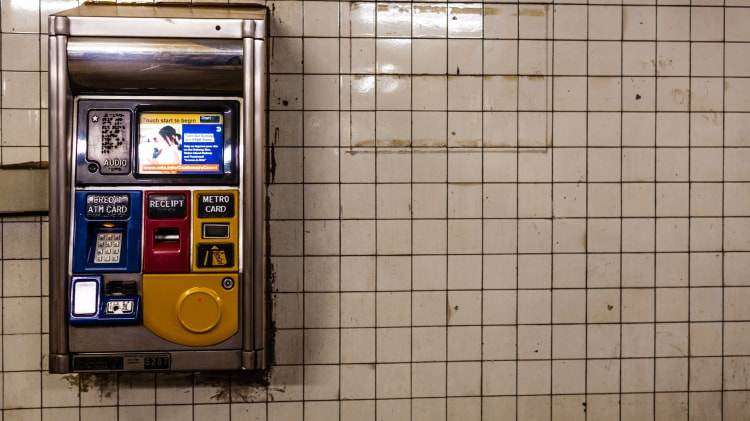
Where to Buy a MetroCard
You can buy a MetroCard at any subway station throughout New York City. Simplylook for MetroCard vending machines or head tostaffed ticket booths within the subway stations.
Additionally, certain retail locations like newsstands or convenience stores also sell MetroCards.
If you’re arriving at JFK Airport,special MetroCard vending machines are available for AirTrain MetroCards.
It’s important to know that while MetroCard vending machines are widespread, not every subway station entrance may have them, so keep an eye out for signs directing you to the nearest machine or booth.
Step-by-Step Guide to Using MetroCard Vending Machines
Since it’s highly probable that you’ll use a vending machine to buy or refill your card during your stay in New York City, here’s a step-by-step guide to using a MetroCard vending machine:
- Approach the machine and touch the “Start” button on the screen to begin.
- Select your preferred language.
- Choose the type of MetroCard you need - Single Ride or refillable
- Choose either to refill a card you already have or get a new one for $1.00
- If you are refilling, now insert your card into the machine
- Select whether you want to add time or value to your card
- Choose the value or time of validity you want
- Select your payment method: cash, ATM card or credit card
- Make the payment
- Collect your MetroCard and receipt (if desired) from the machine.
Payment Methods: Cash, Card, and Contactless Options
MetroCard vending machines accept various payment methods for your convenience. You can use cash (note that the machines give change in coins), credit or debit cards, or even contactless payments like Apple Pay or Google Wallet.
When using a credit or debit card, you might be prompted to enter your ZIP code; international travelers can enter ‘99999’. Do note that there’s a daily limit on the number of MetroCards you can purchase with the same credit card to prevent fraud.
For those who prefer not to use the vending machines, manned ticket booths at many subway stations also accept cash and card payments.
How to Use Your MetroCard
Your MetroCard enables effortless access to New York City’s buses and subways. When swiping at a turnstile or on a bus, your fare generally includes transfers between the subway and bus systems, with the exception of the SingleRide MetroCard, which does not allow transfers between bus and subway. Additionally, a Pay-Per-Ride MetroCard can be shared with friends or family, offering a convenient and cost-effective way for groups to travel together.

Swiping at subway and buses
When entering the subway, locate the turnstile with a slot marked for MetroCards. Swipe your card with the black magnetic strip facing you and towards the slot. It’s important to swipe your card smoothly and at a moderate speed for a successful read.
Once you hear a “beep” you can walk through. For buses, there’s a card reader near the driver. Dip your MetroCard into the reader, wait for the beep, then proceed to find a seat.
Refer to the ”Common Problems” section for helpful tips and solutions to some of the issues you may encounter using MetroCards to pay for your public transportation fares.
Transferring Between Subway and Bus
Your MetroCard allows you to make free transfers between the subway and bus systems. If you’re using a Pay-Per-Ride MetroCard, you can transfer for free between the subway and a bus, or between buses, within two hours of your initial swipe.
Unlimited Ride MetroCards also allow for seamless transfers as part of their unlimited access. This feature is especially useful for longer journeys where a combination of subway and bus travel is needed to reach your destination.
Sharing a Pay-Per-Ride MetroCard
Sharing a Pay-Per-Ride MetroCard is straightforward. This type of card can be used by up to four people at a time.
Simply swipe the card once for each person entering the subway or boarding the bus. The fare for each person will be deducted from the card’s balance.
Remember, while sharing is possible with Pay-Per-Ride cards, Unlimited Ride MetroCards are restricted to use by a single individual only. Sharing a MetroCard can be a cost-effective way for groups or families traveling together on a budget.
MetroCard vs Contactless OMNY System
Whether you lean towards the familiar MetroCard or opt for the convenience of contactless payment, both have distinct advantages.
With OMNY, you pay per ride, but it also includes the benefits of fare capping, which limits your weekly fares to $34, the same cost as a traditional 7-day Unlimited MetroCard. This fare-capping feature ensures that, as long as you use the same card or device for all your rides, you won’t spend more than the cost of an unlimited pass in a week.

Given these benefits, choosing the OMNY system for your travels in New York City seems like an obvious choice. However,there are still scenarios where a MetroCard might be preferable. For instance, if you prefer using cash, you might lean towards a MetroCard, though it’s worth noting that refillable OMNY cards can now be purchased with cash at new vending machines. These machines are currently in a pilot phase and not as widespread as MetroCard machines.
Also, if you wish to keep a souvenir of New York City's transit history, a MetroCard is a tangible memento that will eventually become a collector’s item. Additionally, the MetroCard remains a practical option for those not yet comfortable with contactless technology, lacking a contactless credit/debit card, or without access to an OMNY vending machine.
The eventual phasing out of the MetroCard marks the end of an era and the start of a more connected and modern transit experience in the city.
For comprehensive information on OMNY, you might want to explore our detailed article that covers everything you need to know.
Tips for Tourists: Maximizing Your MetroCard Use
If you’re visiting New York City, mastering the MetroCard can significantly enhance your travel experience. Navigating the subway and bus systems with a MetroCard isn’t just about getting from point A to B; it’s about immersing yourself in the city’s unique rhythm.
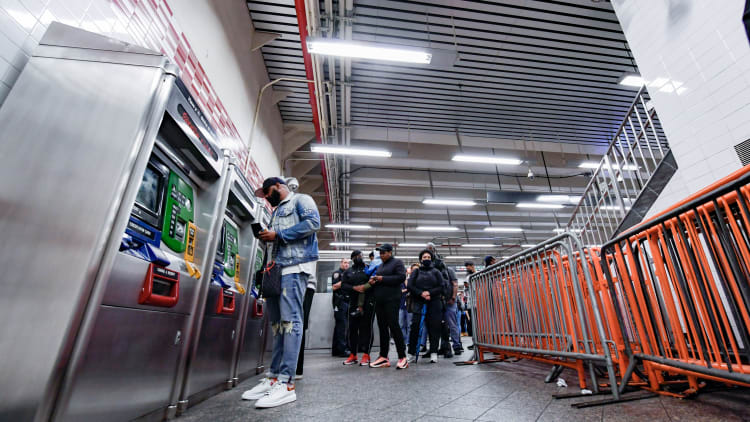
From choosing the right card to understanding the best routes, a little knowledge goes a long way. Here, we offer practical tips to help you make the most of your MetroCard, ensuring that your travels are as smooth and enjoyable as possible.
- Choosing the Right MetroCard for Your Visit: If you’re staying for a few days and plan to explore extensively, the 7-Day Unlimited Ride card is usually your best option. For shorter visits or fewer trips, a Pay-Per-Ride card might be more cost-effective.
- Subway and Bus Route Tips: Familiarize yourself with subway lines and bus routes before you travel. Apps like Google Maps or the MTA's own app can help plan your journey.
- Combining MetroCard with Sightseeing Passes: Some tourist passes include unlimited MetroCard options. Check if these bundles offer savings for the attractions you plan to visit.
- Peak vs Off-Peak Travel: Subways can be crowded during peak hours. Plan your travel during off-peak times for a more comfortable experience.
- Free Transfers: Remember, your Pay-Per-Ride MetroCard allows for free transfers between subways and buses within two hours of the initial swipe.
- Refilling Your Card: Avoid running out of fare by checking your balance regularly and refilling your card as needed.
- Keep Your MetroCard Safe: Treat your MetroCard like cash. Keep it in a safe place to avoid loss or damage.
- Avoid Rush-Hour Travel: If your schedule allows, avoid traveling during rush hours (weekdays 6:30-9:30 AM and 3:30-8:00 PM) for a more pleasant journey.
- Plan Your Routes in Advance: Especially if you’re visiting multiple attractions in a day, planning your route in advance saves time and ensures efficient use of your MetroCard.
- Protecting Against Demagnetization: To ensure your MetroCard works every time, keep it away from magnets and electronic devices. Store it in a wallet or a separate cardholder to protect it from being bent or scratched, which can also lead to demagnetization.
- Considering OMNY as an Alternative: For a more seamless travel experience, consider using the OMNY system. Especially handy for short-term visitors, OMNY allows for contactless payments with a tap of your phone or contactless card, eliminating the need for a physical MetroCard.
- Courtesy Pass in Case of Delays: If you experience a severe delay on the subway and can’t complete your journey, ask a station agent for a Courtesy Pass. It’s not a refund, but you can use this pass as fare payment on the subway or bus within 48 hours of issuance.
Common MetroCard Problems and Solutions
Even with careful use, you might encounter issues with your MetroCard during your stay in New York City. From demagnetized cards to the frustration of a lost or stolen card, it’s helpful to know how to address these common problems. This section provides solutions for typical MetroCard challenges, including how to seek assistance from customer support.
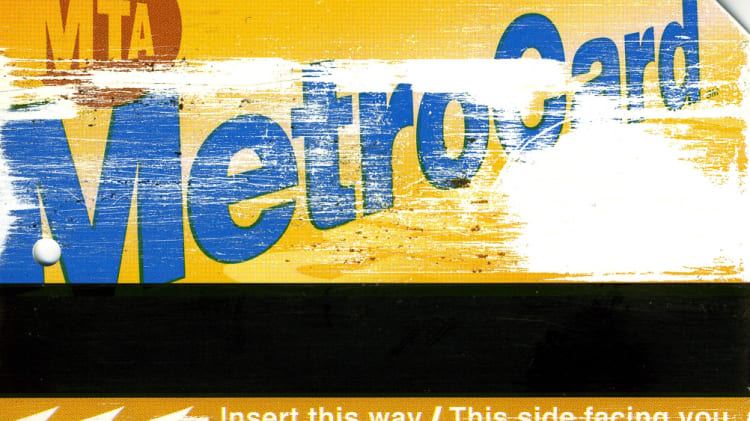
Demagnetized Cards and Read Errors
If your MetroCard isn’t being read by turnstile or bus card readers, it might be demagnetized. This can happen if it’s kept near magnets or electronic devices.
If you face this issue, visit a subway station booth for assistance. The attendant can check your card’s balance and guide you through the replacement process if necessary.
To avoid demagnetization, keep your card in a safe spot away from potential magnetic interference.
Lost, Stolen, or Damaged MetroCards
If your MetroCard is lost, stolen, or damaged, the options for replacement vary based on the type of card.
Unfortunately, for regular Pay-Per-Ride cards and 7-day Unlimited cards, there is no replacement option available, and you will need to purchase a new one. Additionally, cards purchased with cash are not protected and cannot be replaced.
However, for registered 30-day Unlimited Ride MetroCards or 7-day Express Bus cards, you have two options to report the loss or theft:
- File a Report Online: This is the quickest and most efficient method. You can file a report through the MTA website , which is processed promptly.
- Call 511: Follow the prompts to reach the Balance Protection Program.
You’ll need to provide the number of the credit or debit card used to purchase the MetroCard. The refund for your lost or stolen MetroCard will be credited back to that card.
The refund amount is calculated as $4.40 per day remaining on your 30-Day card, and $9.14 per day remaining on your 7-Day Express Bus Plus card. The refund is based on full days remaining from the day you notify MTA of your loss. Note that the $1 new card fee is non-refundable.
You are allowed to file up to two claims per calendar year. The MTA processes the first claim free of charge, but for the second claim, a $5 administrative handling fee is deducted from the refund amount.
Expired MetroCards
Every MetroCard, whether Pay-Per-Ride or Unlimited Ride, comes with an expiration date. This date is printed on the upper left corner on the back of the card. Typically, the expiration date is set to about one year from the card’s purchase date. It’s essential to keep track of this date to ensure your card remains valid for use and to manage any remaining balance effectively.
If you have a Pay-Per-Ride MetroCard that has expired, you’re allowed two years from the expiration date to transfer any remaining funds to a new MetroCard. Here’s how you can manage this process:
- Transfer at a MetroCard Vending Machine: Within the first year after your card’s expiration, you can transfer the balance to a new card using any MetroCard Vending Machine. Simply follow the prompts on the machine to transfer the balance from your expired card to a new one.
- Mail-in Transfer After the First Year: If more than a year has passed since your card expired, you’ll need to send the expired MetroCard to MetroCard Customer Claims for balance transfer. You can obtain a postage-paid Business Reply Envelope from any station agent to send your card to: MetroCard Customer Claims, 130 Livingston Street, Brooklyn, NY 11201
It’s important to note that you can’t transfer or get a refund for any remaining time on an Unlimited Ride MetroCard. Once these cards expire, any unused time is not eligible for transfer or refund. This limitation underscores the importance of utilizing the full value of Unlimited Ride cards within the active period specified on the card.
Customer Support and Assistance
For any MetroCard-related issues, such as fare discrepancies or questions about usage, the Metropolitan Transportation Authority (MTA) offers several customer support options:
- Phone: Dial 511 for direct assistance within New York City. If you’re calling from outside the region or internationally, use 877-690-5116.
- Regular Mail: While not typically ideal for visitors, residents might need to contact MTA via regular mail in certain scenarios, like for some damaged card replacements. Find the necessary addresses on the MTA website . For sending damaged MetroCards, the address is MetroCard Customer Claims, 130 Livingston Street, Brooklyn, NY 11201.
- Customer Service Centers: You can visit centers such as the MTA Customer Service Center located at 3 Stone Street in Manhattan. There are also other centers located at various subway stations, which you can find here .
For more detailed contact information, including email addresses and the locations of all customer service centers, please visit the MTA website. If you need quick solutions while at a subway station, station booth attendants are often the best resource for immediate assistance.
Refunds for MetroCard Errors
If you’re charged incorrectly or encounter a machine error while buying or refilling your MetroCard, you’re entitled to a refund.
Keep your receipt and contact MTA customer service for guidance on the refund process. While immediate refunds aren’t available at subway stations, the customer service team can process your request and ensure you’re not out of pocket due to a system error.
The Environmental Impact of MetroCards
The move towards a more sustainable transit system in New York City is an ongoing effort, with the MetroCard and its associated waste being a significant focus.

While MetroCards have been a staple of NYC transit for decades, their environmental impact has raised concerns, particularly in terms of waste and recyclability. The introduction of the OMNY system is a step towards reducing this environmental footprint, offering a greener alternative to the traditional plastic cards.
Sustainability Efforts in NYC Transit
The Metropolitan Transportation Authority (MTA) is increasingly aware of the need for sustainable practices. In addition to introducing the OMNY system, which reduces reliance on plastic MetroCards, the MTA has implemented measures like the $1 new card fee to encourage passengers to refill their existing MetroCards.
This initiative aims to decrease the number of discarded cards, a significant source of litter in subway stations and trains. However, the challenge of MetroCard waste persists, emphasizing the need for continued efforts in promoting sustainable transit options.
Recycling and Disposal of Old MetroCards
MetroCards, unfortunately, are not recyclable due to the type of plastic used in their manufacture. This presents a disposal challenge, as expired or used cards often end up as litter. To combat this, the MTA encourages riders to keep using their cards until the expiry date and to dispose of them responsibly in trash receptacles. The shift towards OMNY is seen as a long-term solution to this issue, eliminating the need for disposable plastic cards entirely and thereby significantly reducing transit-related waste.
OMNY as a Green Initiative
The introduction of OMNY is more than just a technological upgrade; it’s a significant environmental initiative. By enabling contactless payments through digital devices or contactless cards, OMNY negates the need for single-use plastic MetroCards.
This transition is expected to play a crucial role in reducing the litter and waste associated with traditional fare cards, aligning NYC’s transit system with broader environmental sustainability goals. As OMNY becomes more prevalent, it’s anticipated to bring a cleaner, greener aspect to commuting in the city, significantly reducing the ecological footprint of public transportation in New York.
Frequently Asked Questions
Navigating the subway and bus system in New York City can be much easier once you’re familiar with how MetroCards work.
From the basics of usage and pricing to more specific questions about bulk purchases and card expiration, these FAQs provide you with the essential information to make the most of your MetroCard during your visit to New York City.
-
Every time you swipe your MetroCard to enter the subway or board a bus, the remaining balance on your card is displayed. This feature allows you to conveniently keep track of your Pay-Per-Ride MetroCard’s balance with each use. Additionally, you can check your card’s balance at any MetroCard vending machine.
-
Refunds are not provided for unused Pay-Per-Ride MetroCard value. However, if your Unlimited Ride MetroCard stops working, you can apply for a replacement and a prorated refund for the time lost. Visit a MetroCard Customer Service Center or call the MTA for assistance.
-
There are no specific MetroCard discounts for tourists. However, using the OMNY system or purchasing an Unlimited Ride MetroCard can be a cost-effective option for visitors planning extensive travel within the city.
-
If you lose a 30-day Unlimited Ride MetroCard or 7-day Unlimited Express Bus card, you can report it online on the MTA website or by calling their customer service line. Unfortunately, lost or stolen 7-day Unlimited or Pay-Per-Ride MetroCards cannot be replaced or refunded.
-
The MetroCard can be used on all MTA New York City subways and buses. It’s also accepted on PATH trains, Roosevelt Island Tram, and the JFK AirTrain. However, it cannot be used for Amtrak, New Jersey Transit, or Long Island Rail Road.
-
Keep your MetroCard dry and away from magnets or electronic devices to prevent demagnetization. Also, avoid bending it and store it in a safe place, like a wallet or cardholder, to prevent physical damage.
-
You can use your MetroCard on buses to and from LaGuardia Airport. For JFK Airport, the AirTrain accepts MetroCards, but note that there’s a separate fare. Newark Airport is accessible via the AirTrain, which connects to NJ Transit and Amtrak trains; however, these require separate tickets.
-
For JFK Airport, there are specific AirTrain MetroCards, like the JFK AirTrain 10-Trip and 30-Day Unlimited cards. These are ideal for frequent airport travel but do not apply to general subway or bus transit.
-
No, Unlimited Ride MetroCards are intended for individual use only and cannot be shared. They have a built-in time delay between swipes to prevent multiple users. However, Pay-Per-Ride MetroCards can be shared.
-
If your MetroCard isn’t functioning, first inspect it for any signs of damage or demagnetization. Try swiping it a few more times to see if it works.
If the problem persists, seek immediate assistance at a staffed subway station booth. The staff there will guide you through the necessary steps to resolve the issue. For more comprehensive information, refer to the “Common MetroCard Problems and Solutions” section of this guide.
-
MetroCards typically expire about one year after purchase, and this expiration date is printed on the back of the card. If your card expires, you have up to two years from that date to transfer any remaining balance to a new card at any MetroCard vending machine or station booth.
-
Up to four people can share a Pay-Per-Ride MetroCard. Each person’s fare will be deducted from the card’s balance when swiped at a turnstile or on a bus.
-
A Pay-Per-Ride MetroCard can be swiped up to four consecutive times at any station, allowing multiple entries for a group. Remember, each swipe will deduct a fare from the card’s balance.
-
The minimum amount you can add to a Pay-Per-Ride MetroCard is $5.80. This ensures you have enough balance for at least two subway or bus fares.
-
A 7-day Unlimited Ride MetroCard costs $34. It offers unlimited rides on the subway and local buses for seven consecutive days from the first use.
-
A 30-day Unlimited Ride MetroCard is priced at $132. It provides unlimited subway and local bus rides for 30 consecutive days from the date of first use.
-
A single-use MetroCard, also known as a Single Ride Ticket, costs $3.25, and it’s valid for one subway ride within two hours of purchase.
-
Each MetroCard has a unique ten-digit serial number located on the back of the card, near the magnetic strip. This number is useful for registration and in case you need to report a lost or stolen card.
-
The MetroCard Bulk Sales Program is designed for local businesses, organizations, travel groups, and events that require MetroCards in large quantities.
It offers a convenient way to purchase MetroCards for groups traveling to New York City or for specific events. You can check out their website for more details.
-
Yes, there are specialized MetroCards designed for airport travel. Specifically, for JFK Airport, you can opt for the JFK AirTrain MetroCard. It offers two types: a 10-Trip card for $25 and a 30-Day Unlimited card for $40, both exclusively for use on the JFK AirTrain.
However, these options might not be the most practical for tourists who typically require only a round trip to and from JFK Airport, making these cards of limited interest for short-term visitors.




